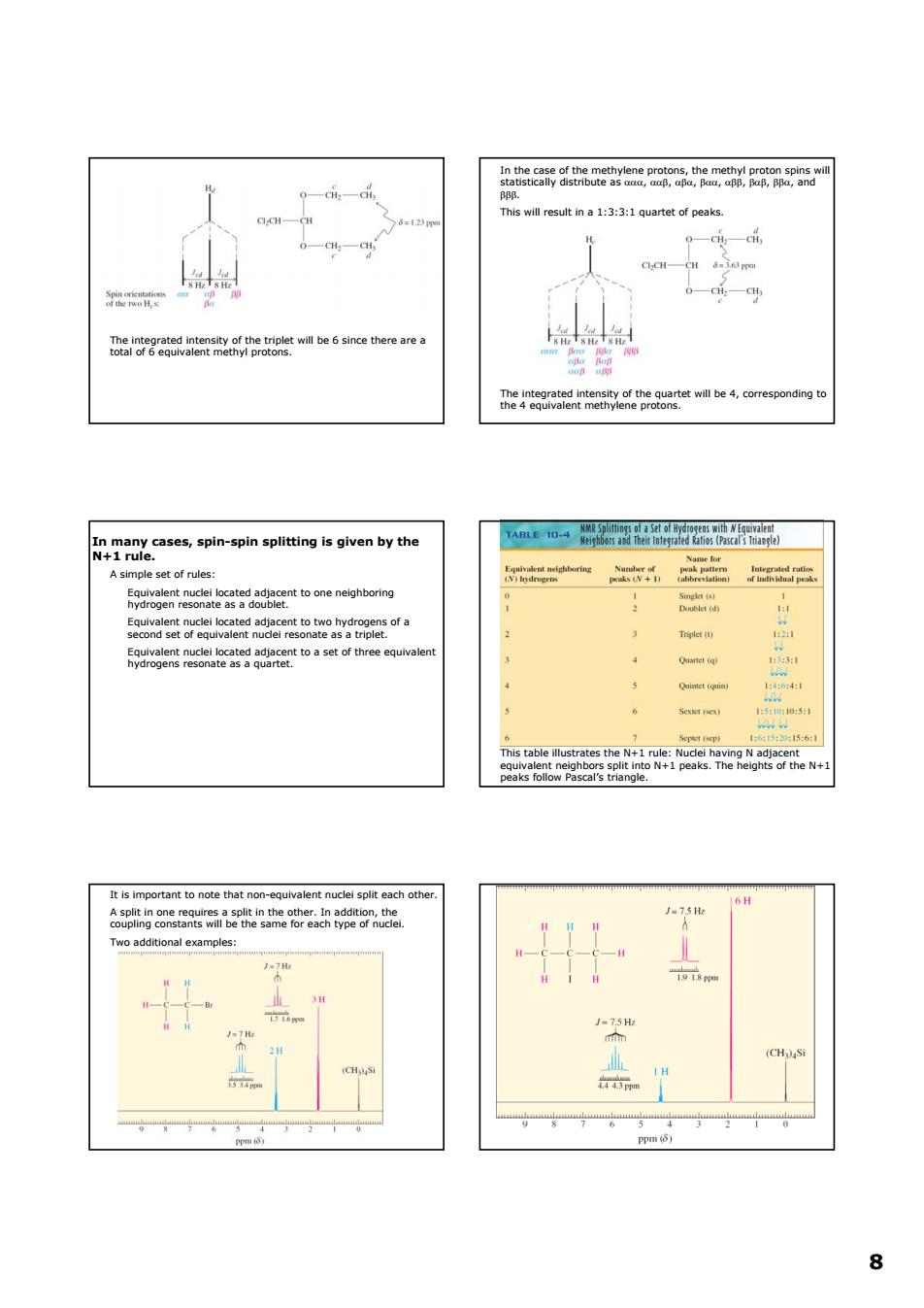正在加载图片...

swill resut ina:::quartet of peaks te be6snce therer h4nPintmayhoagatwbe4,c ae set of rles 5i9ggenteselogaabcetooneneghtboing gertToaogaettoasofhree6quwae peaks fol w Pascal's triangle pln边a wo additional examples: 5地 点 88 The integrated intensity of the triplet will be 6 since there are a total of 6 equivalent methyl protons. In the case of the methylene protons, the methyl proton spins will statistically distribute as ααα, ααβ, αβα, βαα, αββ, βαβ, ββα, and βββ. This will result in a 1:3:3:1 quartet of peaks. The integrated intensity of the quartet will be 4, corresponding to the 4 equivalent methylene protons. In many cases, spin-spin splitting is given by the N+1 rule. A simple set of rules: Equivalent nuclei located adjacent to one neighboring hydrogen resonate as a doublet. Equivalent nuclei located adjacent to two hydrogens of a second set of equivalent nuclei resonate as a triplet. Equivalent nuclei located adjacent to a set of three equivalent hydrogens resonate as a quartet. This table illustrates the N+1 rule: Nuclei having N adjacent equivalent neighbors split into N+1 peaks. The heights of the N+1 peaks follow Pascal’s triangle. It is important to note that non-equivalent nuclei split each other. A split in one requires a split in the other. In addition, the coupling constants will be the same for each type of nuclei. Two additional examples: